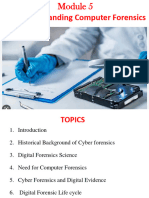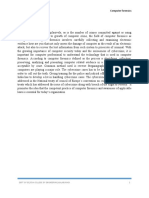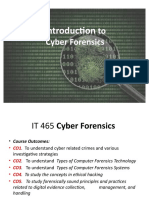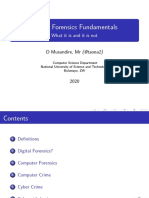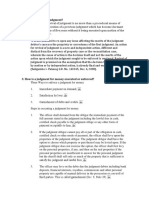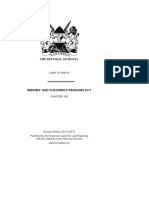0% found this document useful (0 votes)
8 views19 pagesModule 5
The document provides an overview of cyber forensics, emphasizing its importance in investigating cybercrime and the legal handling of digital evidence. It covers the historical background, definitions, and processes involved in digital forensics, including the digital forensic life cycle and the need for trained experts. Additionally, it discusses the differences between computer forensics and network forensics, the characteristics of digital evidence, and the legal context surrounding its admissibility in court.
Uploaded by
Shashank RCopyright
© © All Rights Reserved
We take content rights seriously. If you suspect this is your content, claim it here.
Available Formats
Download as PDF, TXT or read online on Scribd
0% found this document useful (0 votes)
8 views19 pagesModule 5
The document provides an overview of cyber forensics, emphasizing its importance in investigating cybercrime and the legal handling of digital evidence. It covers the historical background, definitions, and processes involved in digital forensics, including the digital forensic life cycle and the need for trained experts. Additionally, it discusses the differences between computer forensics and network forensics, the characteristics of digital evidence, and the legal context surrounding its admissibility in court.
Uploaded by
Shashank RCopyright
© © All Rights Reserved
We take content rights seriously. If you suspect this is your content, claim it here.
Available Formats
Download as PDF, TXT or read online on Scribd
/ 19


